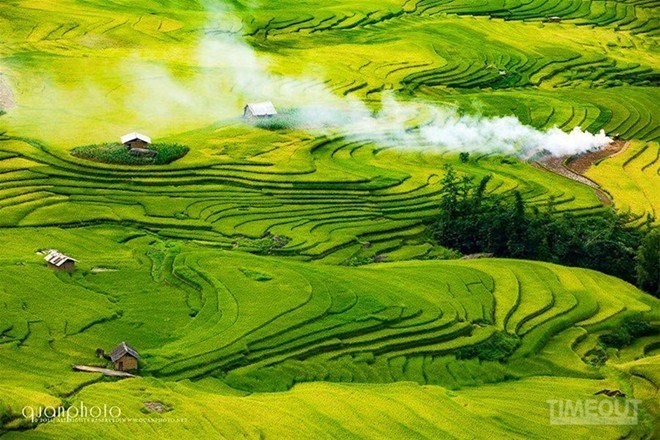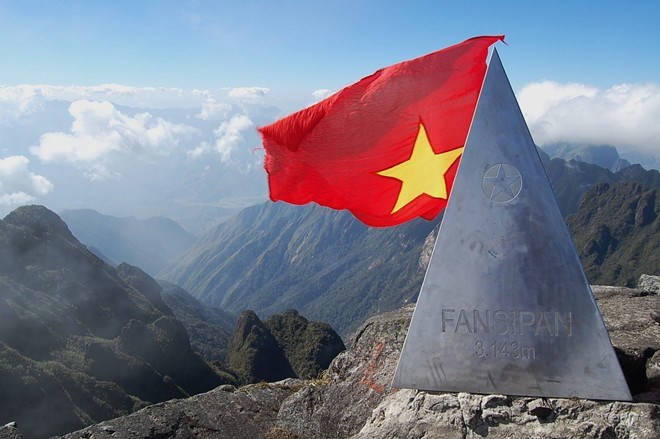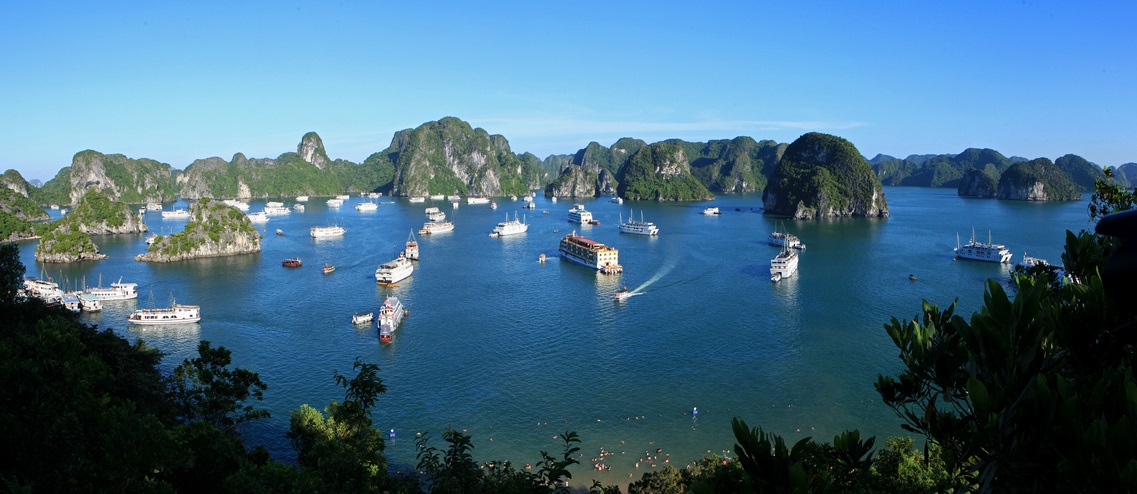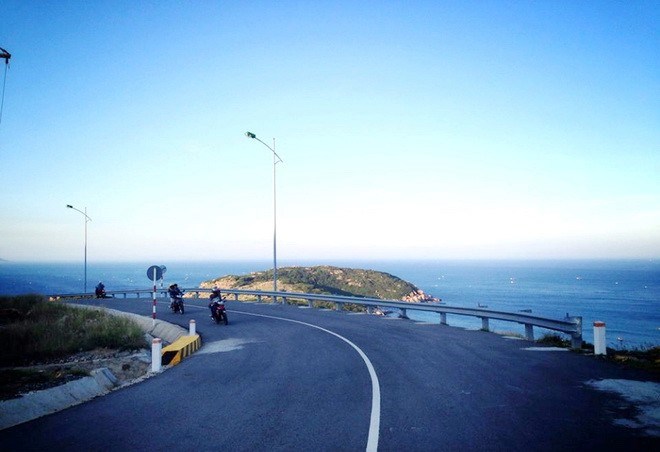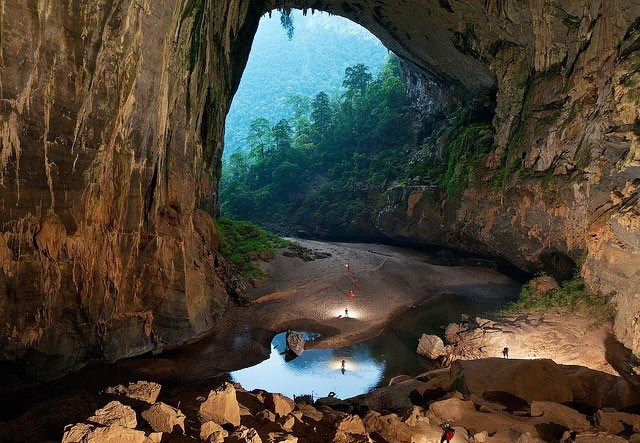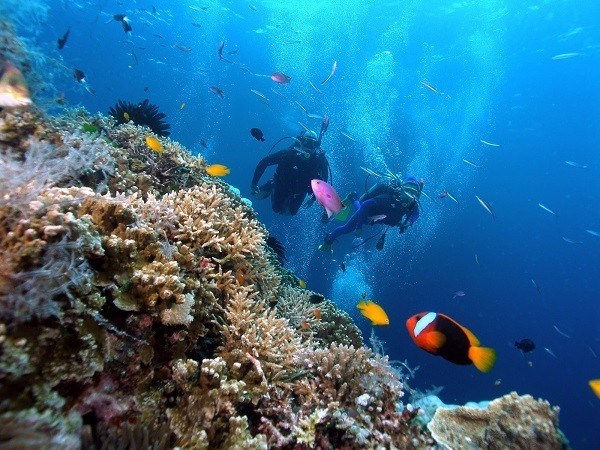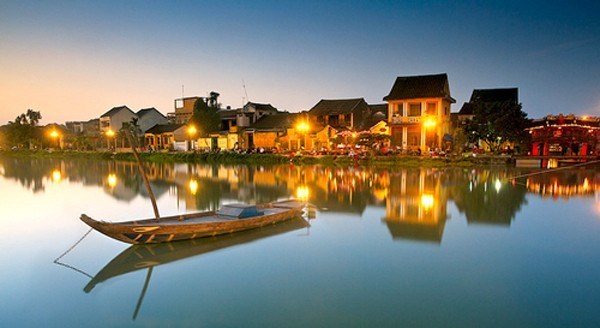1. Visiting the Mekong Delta in the “floating” season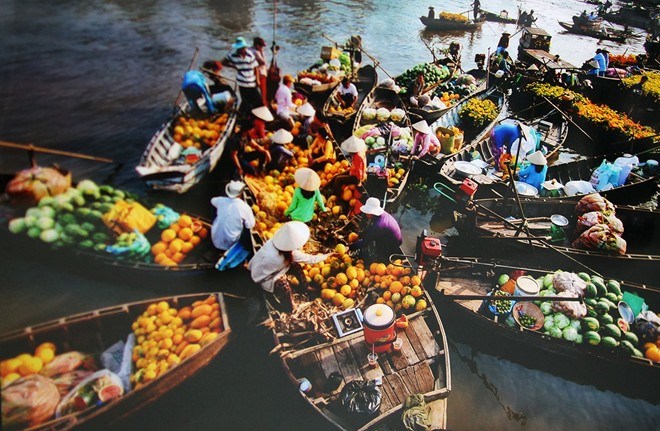
When it comes to the Mekong Delta, nothing can beat what the “floating” or high-tide season can offer tourists. Starting in the seventh month of the lunar calendar and ending in the tenth, the season is marked with flooded fields and beautifully blossoming yellow flowers known as dien dien in Vietnamese. Seasonal dishes, which are made from the flower and ca linh, a fish species in the carp family, are also a major draw.
2. Watching sunrise in the central province of Phu Yen
The best place to experience this is Cape Dai Lanh, about 80 kilometers north of the central beach town of Nha Trang. As Vietnam’s easternmost point, it is the first place one can see the morning sun. After indulging in the golden rays, you can then head to the nearby beach to sunbathe and swim.
3. Visiting ripe rice terraces in northern highlands
Rice terraces in the northern highlands provinces, such as Ha Giang, Yen Bai and Lao Cai, look magnificent all year round, even when they are flooded by monsoon rains. But only during the harvest season, between the end of September and mid-October, is their beauty in its prime. Golden fields, which run along mountains and are highlighted by green forests, have become popular postcard pictures. Hoang Su Phi, Mu Cang Chai and Sa Pa are the best places to visit.
4. Climbing Fansipan
With a height of 3,143 meters, Fansipan is Vietnam’s highest mountain and often dubbed “The Roof of Indochina,” so there is no excuse for not visiting it. The fact that it is only 9 kilometers from Lao Cai’s Sa Pa resort town should land it a place on every trekking fan’s itinerary. It takes about two to five days to reach the peak and return. Although the mountain top is accessible all year round, it is best to visit in October and November.
5. Luxury Halong Bay Tours
Luxury Halong Bay tours is without a doubt a trademark of Vietnam’s tourism. Although a day tour is enough for you to explore the world heritage site’s unworldly beauty, you must stay the night on a cruise to truly appreciate its grandeur. The serenity one feels while lying on the deck of a boat, watching a starry sky, and breathing in the salty sea smell, which is stronger at night, is well worth every dime you pay for the experience.
6. Riding motorcycles from Nha Trang to Cam Ranh
Open to traffic in 2010, a 30-kilometer road between the Nha Trang resort town and Cam Ranh town is often praised as one of the most beautiful roads in the central region. Although it curves around a mountain, it also runs along beautiful beaches. For VND70,000-90,000 a day, you can rent a motorbike for your own use, exploring the road at a leisurely pace and occasionally making a stop to take photos of surrounding landscapes.
7. Exploring Son Doong Cave
Since it was named the world’s largest cave by British explorers, Son Doong in the central province of Quang Binh has taken both local and international media by storm. Travel magazines and websites around the world have constantly named it one of the top destinations. In addition to its impressive size–6.5 kilometers long and more than 200 meters high–the cave boasts primeval and mesmerizing limestone structures.
8. Diving in Phu Quoc
Although Nha Trang has long been established as a diving mecca among foreign tourists, Phu Quoc Island in the south has become a new favorite in recent years. With its nearly untainted sea, wild beaches and colorful coral reefs, the best time to visit the island is between December and March.
9. Boating in Hoi An
The ancient town in the central province of Quang Nam has charmed millions of foreign tourists over the years. Little as Hoi An is, you can spend days exploring it: walking around centuries-old neighborhoods, discovering local food and gazing at the colorful and elegant lanterns. Make sure you don’t forget to take a boat along the Hoai River at night to see and feel how surreal the town’s peacefulness is.
Source: thanhniennews.com

